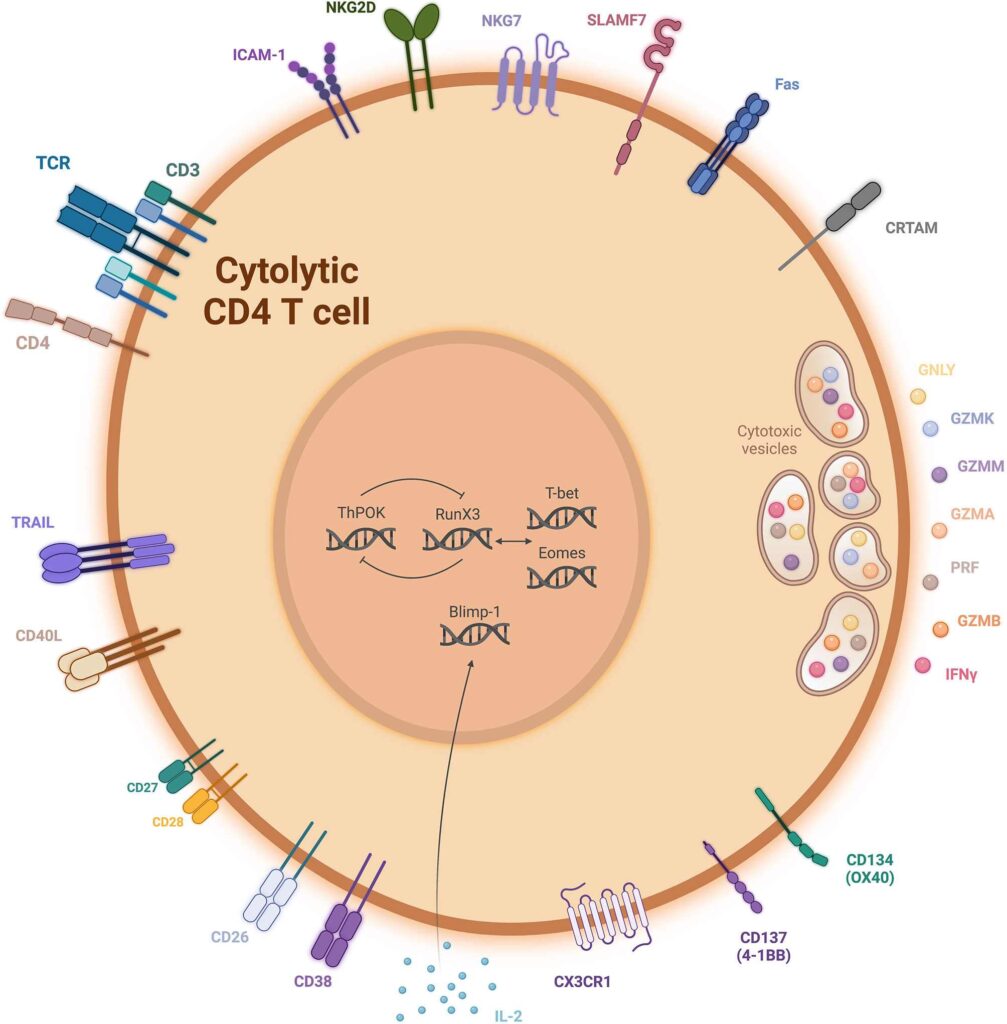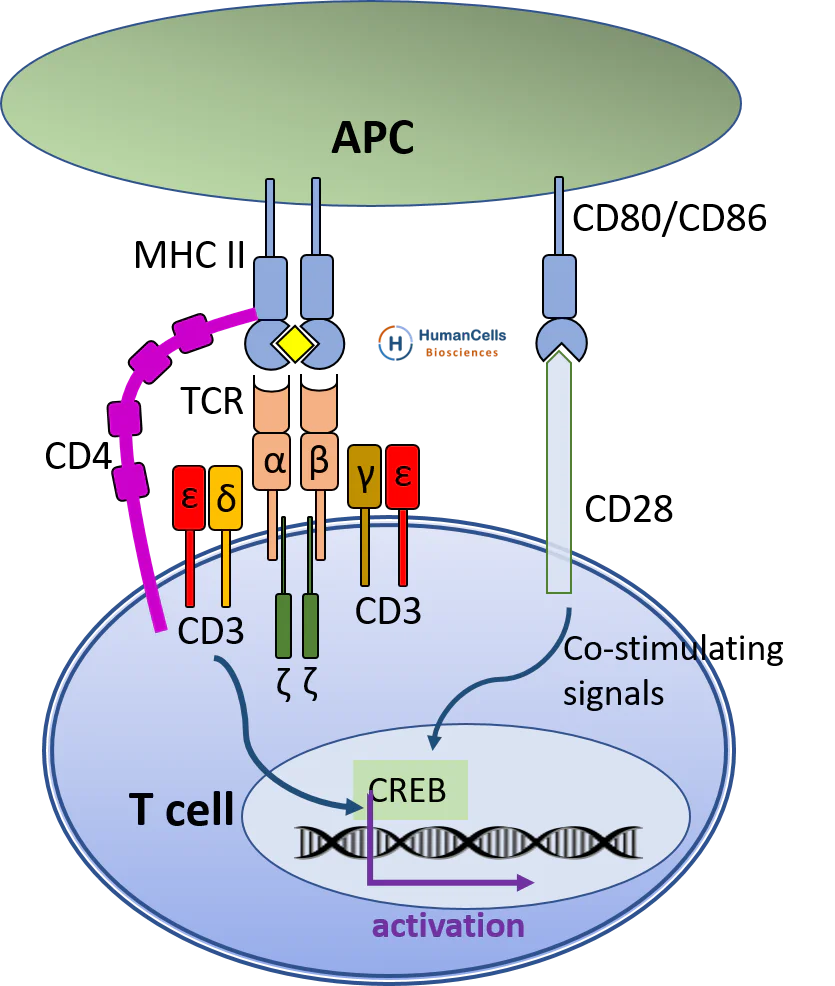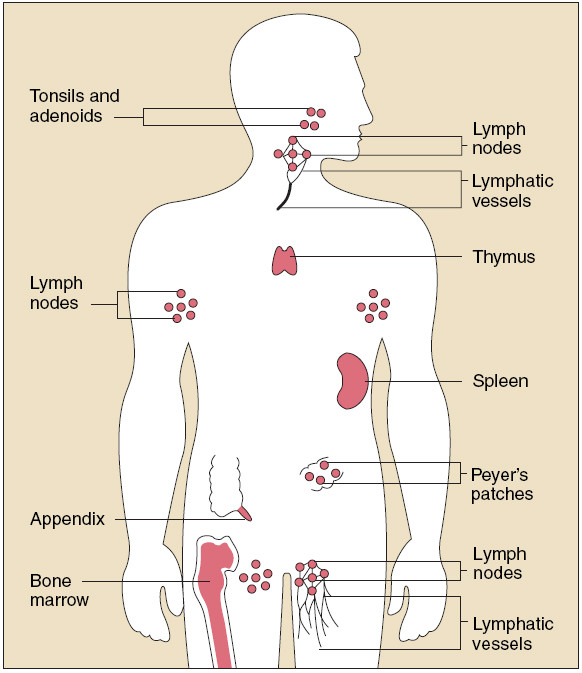Human Immunodeficiency Virus (HIV) is a virus that attacks the immune system, weakening the body’s ability to fight infections and diseases. The main targets of HIV are certain immune cells called CD4+ cells, which include T-lymphocytes (helper T cells), macrophages, and monocytes. These cells are critical players in the body’s defense system, and their destruction is key to how HIV causes disease. Alongside these cells, the lymphoid organs play a vital role in the progression of HIV infection.
What are CD4+ Cells?

CD4+ cells are a group of immune cells that have a protein called CD4 on their surface. This protein acts like a “lock” that HIV uses to enter and infect the cell. Among these CD4+ cells, the most important are:
- T-lymphocytes (Helper T cells): These cells help coordinate the immune response by signaling other immune cells to act against infections.
- Macrophages: These are large immune cells that engulf and digest pathogens and debris. They also help activate other immune cells.
- Monocytes: These cells circulate in the blood and can move into tissues where they develop into macrophages or dendritic cells.
Summary of CD4+ Cells
- CD4+ cells are the key players in our immune system, acting as the main coordinators of immune defense.
- HIV specifically targets these cells, weakening the body’s ability to fight infections.
- Understanding the role of CD4+ cells helps explain how HIV disrupts immunity and causes disease.
Table of Contents
How HIV Infects CD4+ Cells
HIV attaches to the CD4 protein on the surface of these immune cells, especially helper T cells. Once attached, the virus fuses with the cell membrane and releases its genetic material inside. HIV then uses the cell’s machinery to make copies of itself, eventually destroying the infected cell in the process.
Because helper T cells are crucial for activating the immune response, their destruction leaves the body vulnerable to many infections and diseases. Macrophages and monocytes can also be infected, but unlike T cells, they survive longer and can act as reservoirs where the virus hides, making it harder to eliminate HIV completely.
Role of T-Lymphocytes (Helper T Cells)

Helper T cells are the “managers” of the immune system. They help activate other cells like B cells (which produce antibodies) and cytotoxic T cells (which kill infected cells). When HIV infects and destroys these helper T cells, the immune system loses coordination. This loss is what causes the immune deficiency in AIDS (Acquired Immunodeficiency Syndrome), the final stage of HIV infection.
The gradual decline of CD4+ T cells in the blood is a key marker doctors use to monitor the progression of HIV infection. When the number drops below a certain level, the immune system becomes too weak to fight off opportunistic infections.
Role of Macrophages and Monocytes
Macrophages and monocytes have a different role. They are part of the innate immune system, the body’s first line of defense. Unlike helper T cells, these cells don’t get destroyed quickly by HIV. Instead, they can harbor the virus for long periods, acting as reservoirs.
This is important because it allows HIV to persist in the body even when treatment reduces the virus in the blood. Macrophages can also transport the virus to different tissues, including the brain, contributing to complications seen in HIV-infected individuals.
Lymphoid Organs in HIV Infection
Lymphoid organs include the lymph nodes, spleen, thymus, and tonsils. These organs are where immune cells grow, mature, and communicate.
Lymph Nodes

These small, bean-shaped structures filter lymph fluid and are centers where immune responses are coordinated. They contain many CD4+ cells, making them key sites for HIV replication. During infection, HIV causes lymph nodes to swell and eventually damage them.
Spleen
It helps filter blood and supports immune responses. The spleen also contains many CD4+ cells and becomes a site where HIV replicates.
Thymus
This organ is important for the development of T cells. HIV infection can disrupt thymus function, affecting the production of new T cells and contributing to immune deficiency.
Tonsils
Like lymph nodes, tonsils trap pathogens and are rich in immune cells, including CD4+ cells, serving as additional sites for HIV infection.
The virus replicates massively in these lymphoid tissues, which become reservoirs for HIV, making it harder for the body to clear the infection and for treatments to eliminate the virus completely.
Conclusion
In summary, CD4+ cells especially helper T lymphocytes, macrophages, and monocytes—are central to the development and progression of HIV infection. HIV targets these cells because they are essential for a strong immune system. The virus’s destruction of helper T cells weakens the immune defense, leading to AIDS. Meanwhile, macrophages and monocytes serve as hidden reservoirs that allow HIV to persist in the body for years.
Lymphoid organs act as important battlegrounds where HIV replicates and spreads, damaging the immune system’s structure and function. Understanding the roles of these cells and organs helps researchers develop better treatments and strategies to control HIV infection.
Thanks to advances in medicine, people living with HIV can now manage the disease effectively with antiretroviral therapy (ART), which helps keep the virus under control and preserves the immune system. However, ongoing research into the interaction between HIV, CD4+ cells, and lymphoid tissues remains crucial for finding a complete cure in the future.
Frequently Asked Questions
What is the role of CD4+ cells?
CD4+ cells help the immune system fight infections by signaling other immune cells to attack germs. They are important for keeping the body healthy. Diseases like HIV weaken CD4+ cells, making it harder for the body to fight infections.
What do you mean by Lymph Nodes?
Lymph nodes are small, bean-shaped structures that are part of the immune system. They filter harmful substances and help fight infections by producing and storing white blood cells. They are found throughout the body, especially in the neck, armpits, and groin.
Related Articles

